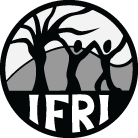Acceleration and Novelty: Community Restoration Speeds Recovery and Transforms Species Composition in Andean Cloud Forest
Wilson, Sarah Jane, and Jeanine M. Rhemtulla. “Acceleration and novelty: community restoration speeds recovery and transforms species composition in Andean cloud forest.” Ecological Applications 26.1 (2016): 203-218.
Vast areas of the tropics have been deforested and, especially in mountain areas, require assistance to grow back. We already know this. But it was on a bus in the central Ecuadorian Andes, driving through miles of deforested, eroded, and abandoned land to trek in a tiny patch of remnant cloud forest, that it hit home for IFRI researcher Sarah Wilson just what an enormous task lay ahead. Back in Canada, she discovered that we were just beginning to scratch the surface of understanding if these montane forests could be restored, let alone how to do it while involving local communities. Eight years after that initial visit, her paper, published in the January edition of Ecological Applications, represents the first to investigate how well community-based efforts to restore cloud forest work from an ecological perspective. In collaboration with Oliver Coomes, Sarah and co-author Jeanine Rhemtulla combine tree and soil surveys with household data on tree planting practices to show that community-based efforts can increase forest diversity and jump-start succession, but because people selectively plant ‘useful’ species, may produce ‘novel’ forests on these landscapes. Work was made possible by grants to Sarah from the IDRC, NSERC, FQRNT, and Theo Hills Foundation.
Abstract
Community-based tropical forest restoration projects, often promoted as a win-win solution for local communities and the environment, have increased dramatically in number in the past decade. Many such projects are underway in Andean cloud forests, which, given their extremely high biodiversity and history of extensive clearing, are understudied. This study investigates the efficacy of community-based tree-planting projects to accelerate cloud forest recovery, as compared to unassisted natural regeneration. This study takes place in northwest Andean Ecuador, where the majority of the original, highly diverse cloud forests have been cleared, in five communities that initiated tree-planting projects to restore forests in 2003. In 2011, we identified tree species along transects in planted forests (n = 5), naturally regenerating forests (n = 5), and primary forests (n = 5). We also surveyed 120 households about their restoration methods, tree preferences, and forest uses. We found that tree diversity was higher in planted than in unplanted secondary forest, but both were less diverse than primary forests. Ordination analysis showed that all three forests had distinct species compositions, although planted forests shared more species with primary forests than did unplanted forests. Planted forests also contained more animal-dispersed species in both the planted canopy and in the unplanted, regenerating understory than unplanted forests, and contained the highest proportion of species with use value for local people. While restoring forest increased biodiversity and accelerated forest recovery, restored forests may also represent novel ecosystems that are distinct from the region’s previous ecosystems and, given their usefulness to people, are likely to be more common in the future.
News
IFRI Special Issue Collaboration
(17/09/2016)
FLARE Announces Keynote Speakers

